#Cyclone Amphan Relief Orissa
Explore tagged Tumblr posts
Text
Cyclone Amphan Relief - Initiated By Aahwahan Foundation
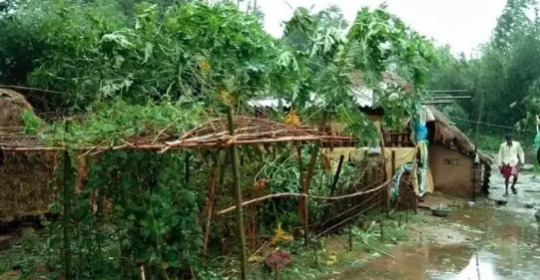
Cyclone Amphan, made landfall along with the West Bengal and Odisha coast on 20/05/20202, Wednesday, Directly moving in the path of tens of millions in India. There are fears of widespread destruction from heavy rain, powerful winds, and storm surge in low-lying areas. Millions of people have been displaced. The authorities have reported complete destruction of residential structures, including thatched huts, major damage to the road network, the collapse of infrastructure, loss of crops & livestock. The volunteers from Aahwahan Foundation have hit the ground running. In this hour of crisis, we need to scale up our efforts. Support the people of West Bengal and Odisha through our relief initiatives and helping people to evacuate to secure place and provide dry food. We are running a Campaign Cyclone Amphan Relief to support effected people, Please donate us
#Cyclone Amphan Relief#Cyclone Relief#Cyclone Amphan Relief Orissa#Cyclone Amphan Relief West Bengal#Cyclone Amphan Relief by NGO#NGO Support Cyclone Amphan Relief
1 note
·
View note
Text
Cyclone Amphan 2020 (India and Bangladesh) Relief Donations
On 20th May 2020, a super cyclonic storm, belonging to Category 5 Tropical Cyclone (the most devastating in the scale, for context, the 2005 Hurricane Katrina in the US was also a Category 5 storm) ravaged the Eastern part of the Indian Subcontinent, with the states of West Bengal and Orissa in India, and some southern parts of Bangladesh bearing the brunt of the storm. In particular, the state of West Bengal has faced maximum destruction in the 36 hours the cyclone and its aftermath continued.
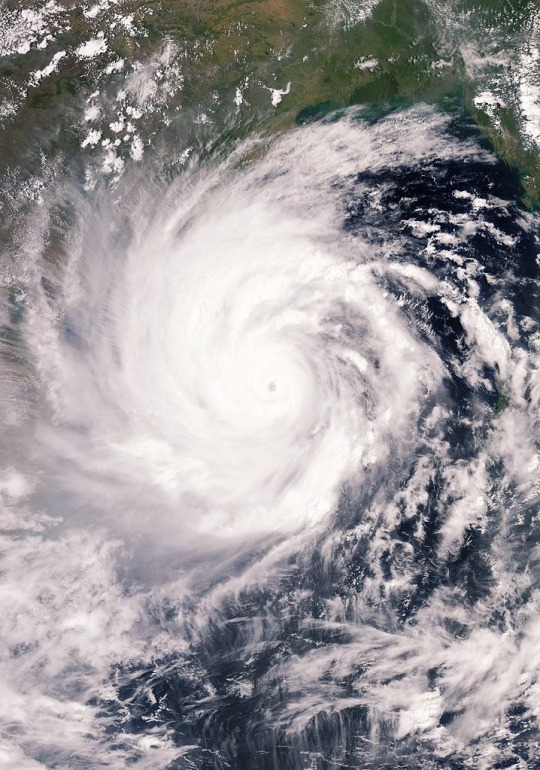
My city, Kolkata (in WB), was ravaged, with thousands of trees uprooted, electricity poles torn down, buildings and temporary shelters shattered to the ground. The most devastating losses however, were faced by the poorest people in my state, those living in and around the Sunderbans Belt of Bengal. District after district was flooded, people gathering in storm shelters after losing everything, their homes, livelihoods and properties. Everything was swept away by the cyclone, swallowed and spat out, unrecognizable, in shreds. Our state, being a riverine terrain, housing the largest delta in the world, was already a precarious zone due to being hit by massive floods every monsoon, and this cyclone was the by far the deadliest blow to the already fragile ecosystem.
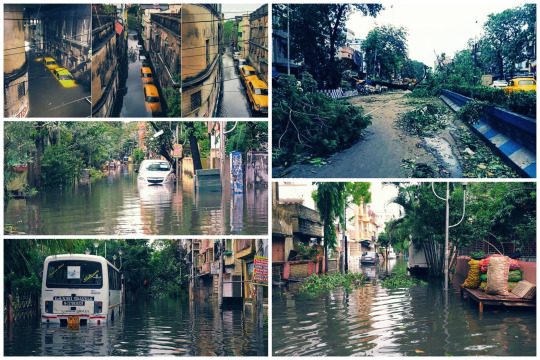
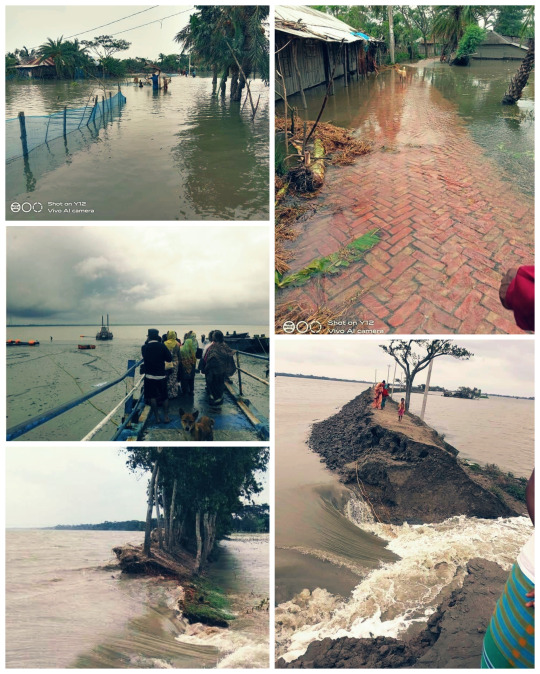
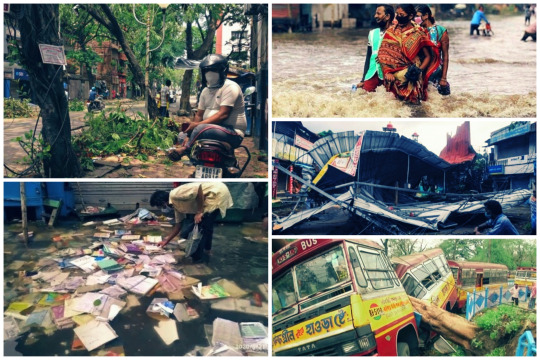
The loss estimated by govt and other authorities is worth somewere around INR 1 lakh Crore (USD 1,321,658,000).
Still now after 6 days since the cyclone hit, massive parts of Bengal are plunged in darkness, people stranded in temporary shelters, with no drinking water or food. Covid-19 seems a lesser threat now as compared to what we have faced.
Both national and international media are practically silent about it, with the result that the relief operations and funding are nowhere near the amount or efforts required. Even as I write this, millions of people are stranded at remote locations without communication, housing or basic food and water supplies.
I urge you, wherever in the world you are, please please come forward and help us out 🙏 even a single dollar, however much you are able to spare, will help. Every single contribution is going to help towards rebuilding the lives of millions.
👇👇👇Below are the details to some of the ground level NGOs working to provide relief, their details and authenticity have been verified by me, and wherever possible, I've provided links to their official websites. For any queries or details, feel free to contact me, reply in the comments or send asks.
👉A full list of all major NGOs working for relief and their contact / donation details can be found here. 👈
Please help to save the Cyclone Amphan Victims 🙏
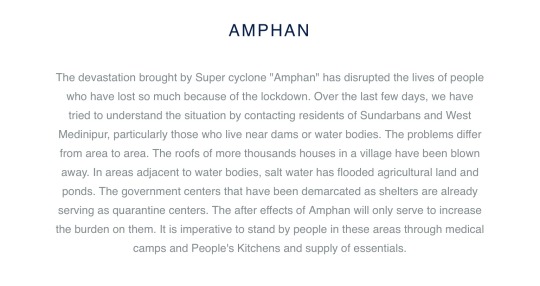
1. Quarantined Students Youth Network (volunteer students network who are doing relief work in major areas)
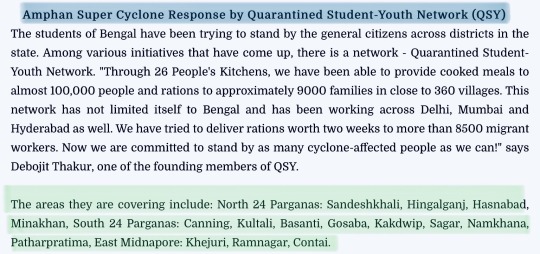
PAYPAL link 👇

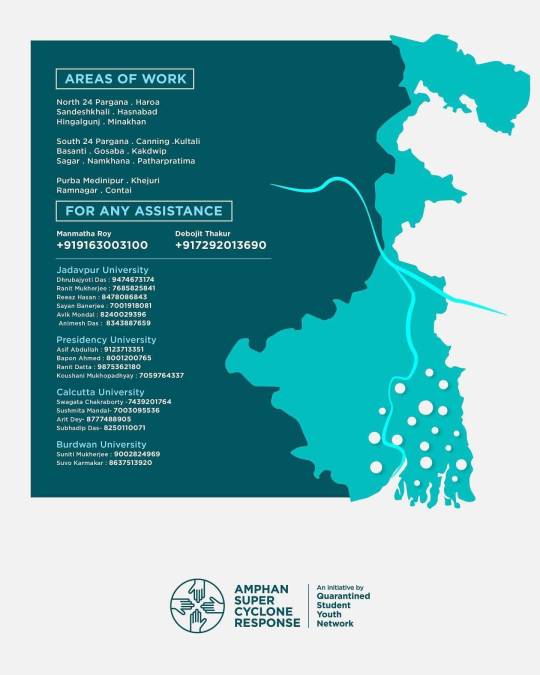
2. West Bengal State Emergency Relief Fund (govt treasury) :

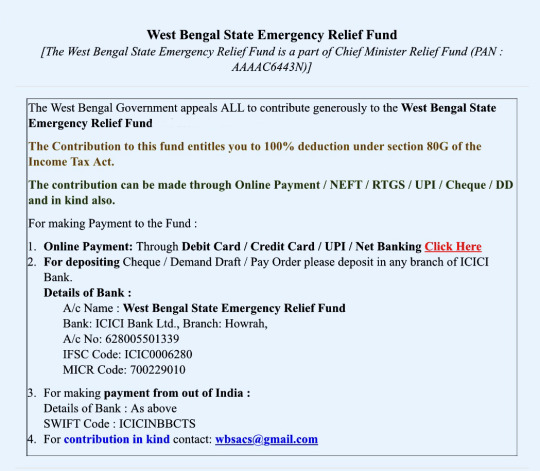
I will be updating the list as and when further names come up.
Links to news articles regarding the Cyclone :
The Print | Scroll | TOI | NDTV | CNN | EdexLive | BBC | NY TIMES
PLEASE REBLOG AND SPREAD THE WORD. EVERY CONTRIBUTION WILL HELP. 🙏
#Cyclone Amphan#Cyclone Amphan help#Amphan West Bengal#India#West Bengal#natural disasters#Cyclone Amphan Donations#amphan news#amphan update#PLEASE REBLOG#DO NOT IGNORE#THIS IS AN EMERGENCY#@all my mutuals please help me out by reblogging this 🙏
682 notes
·
View notes
Text
Democracy ?
There is no democracy left in India!
For those who don't know,
Farmers have been protesting in Delhi for the last 67 days, the new farmer bill released by the government will destroy their livelihood, farmers already struggle to put 2 meals a day in their plate, with the new bill they will not even be able to afford a meal a day! Farmer suicides are already extremely high in this country, families struggle with hunger on a daily basis!
These Farmers were protesting peacefully, and Yet on REPUBLIC DAY itself the government ordered Delhi police to charge lathis and tear gas them! They have beaten up these people without mercy.
Right now in the country any one who stands with the farmers is a "deshdrohi" (anti-national) , this is the statement released in public! In addition to that 2 days of Network Ban has been implicated , so now people who are there protesting CAN'T even communicate for help from outside!
Media is corrupt and is spreading false propaganda against the farmers , they're trying to make it a religious issue , because ofcourse !!
This is not the first time it is happening
• All activists are being sent to jail, so that there is no one left to speak against the government!
• Migrant Labourers had to pay for their own transport in a lockdown after losing their jobs, and since they could, they had to walk miles! From one state to another to go back home!
• Students were lathi charged and beaten up in Delhi ,JNU! And in that protests since an Eminent Actress, who herself runs the biggest NGO fighting for mental health in India (which is a big big taboo till date) stood by the side of the student, she was unnecessarily dragged into a drug probe, just to tarnish her reputation, and destroy her career!
• Doctors in government hospitals (who are understaffed,underpaid, overburdened ) who worked through the entire of the pandemic, have not been paid salaries for more than 4 months! And when they spoke about it on social media, all of them were fired, without even being paid.
• Medical students are being used as a guinea pig for the vaccine that has been implemented, take note that this particular vaccine (not Moderna or Pfizer) has not yet released the results of it's 3rd trial !
• Hathras in UP had the most gut wretching rape case where a 19year old Dalit, Farmer , girl was not only raped but also her spine was broken and her tongue was cut off! ( Because in India, they don't just rape people , they kill you after that instantly!) And despite all the things the first statement that the govt released was it was not a rape! And the very day she died in the hospital, the UP police, locked the family in their house and cremated the girl's body without letting any investigation proceed!
• Forcefully established Ram Mandir after breaking Babri Masjid, and then that's not it, now they Want a Krishna temple right on that spot where there's already a mosque, and they filed a case and the court accepted it!!! Because even the Court is freaking INSANE!!!
• A muslim comedian has been sent to jail for making a Joke on Amit Shah! A Comedian! Freedom of speech be damned! And the court has rejected his bail!
• 2020s biggest Super Cyclone left West Bengal destroyed! Along with Orissa! The PM did not even bother to tweet a single letter in condolences, the centre promise a sum of money to the state government and till date has not sanctioned it! Leave Amphan WB has not even got the last check of Cyclone relief funds from Cyclone Ayla! Why? Because the state is run by opposition party!
• Army is dying in borders because of sneak attacks in borders from neighbouring countries and yet we're not despatching supplies like food, water, bullet proof jackets or backup regiments!
• 10000+ teachers have been fired in Tripura and were peacefully protesting with their families, they were lathi charged in the morning and then at 10pm at night they were attacked with water jets! In this Winter season! 6 of them are in Critical Care in my hospital!
• UP police is beating up anyone who is supporting the Farmer movement!
WE are a FUCKED country!
Farmers are anti-national!
Students are anti-national!
Muslims are anti-national!
Sikhs are anti-national!
Hindus who support any of the above/below are liberals and thus anti-national!
Women are anti-national!
Comedians are anti-national
Migrant labours are anti-national!
Doctors/Nurses/Healthcare staff are anti-national!
Teachers are anti-national!
The poor are anti-national!
ANYONE who possesses a 🧠 in this Country is anti-national!
And there are people who have the audacity to say
"you shouldn't speak like that About the country , it gives us a bad international reputation"
And to you guys who don't live in India and see our culture in only media, Don't be fooled , we ain't any awesome epitome of culture, The only culture 90% of India has is"Rape Culture"
I'm so fucking done with this , a fucking asteroid can hit us and we can all die, thank you!


People wanted New India NOT New Nazis!
#not Ironstrange#tw: brutal rape#tw: rape culture#tw rape#farmer lives matter#farmer protest#cyclone amphan#tripura 10000 teachers#new India#bjpindia#JNU lathi charge#farmer suicides#religious extremism#Islamophobia#sikhphobia
2K notes
·
View notes
Photo

This picture was taken in Sunderban on June 8th. This was one of the last trips by one of our admins. #Sunderban is an UNESCO WORLD HERITAGE SITE because of many reasons, but after the Super Cyclone #Amphan that hit on 20th May, has devastated Sunderbans along with other parts of South Bengal and Orissa. The recent picture from the aftermath looks something like this and there's a lot of restoration work needed to save the only Salt water breeding ground of the #BigCats, aka #RoyalBengalTiger. Kind hearted people and Travellers feel free to donate to the #westbengalchiefministersdisasterrelieffund . And . Anybody who want to directly volunteer for the relief, feel free to contact us. There's a huge task to restore back Sunderbans, Gangasagar Island, The sea beaches and so many other parts of South Bengal. The lockdown situation is also an hindrance in carrying out relief work. So it is all the more important to help in any kind, from any good samaritan. Please come together to save the beautiful tourists destinations of Southern Bengal and the lovely people reasiding there, who provide services to the tourists. . The wild life of Sunderbans are also in distress and calling all wildlife enthusiasts for their support in manpower and also economically. . The link : https://wbserf.wb.gov.in . 🧲 THEoffGRID Travel Green, Travel Responsible. #amphan #nationaldisaster #westbengal #communitywork #helpingeachother #thewild #savetheplanet #gogreen #saynotoplastic #theoffgrid (at Dabu) https://www.instagram.com/p/CBTgXENnB1D/?igshid=m20pfv8bpn92
#sunderban#amphan#bigcats#royalbengaltiger#westbengalchiefministersdisasterrelieffund#nationaldisaster#westbengal#communitywork#helpingeachother#thewild#savetheplanet#gogreen#saynotoplastic#theoffgrid
0 notes
Text
India’s cyclone response saves lives. Climate resilient infrastructure will save livelihoods
Nevertheless, disaster response teams launched a large-scale operation in Maharashtra and Gujarat states ahead of landfall to evacuate more than 100,000 people — including coronavirus patients — from the coast and move them to temporary shelters and other facilities.
Teams were dispatched to go door-to-door urging people living in low-lying areas to seek shelter and educating those who didn’t want to move.
Officials were concerned that storm surges would inundate the low-lying areas — where many people live in flimsy or makeshift housing — and that intense rainfall could lead to deadly flooding.
The response may have averted a bigger disaster as only one person is reported to have been killed in the storm, according to Anupam Srivastava, National Disaster Response Force (NDRF) commandant in Maharashtra.
“Apart from tin roofs flying off and treefall there isn’t much damage in the state and we expect to clear the roads by tomorrow,” Srivastava said on Wednesday.
Images show disaster teams on the ground in Maharashtra and neighboring Gujarat clearing trees and other debris from roads after wind speeds of 130 kph (81 mph) hit the region.
A 40 km (24 mile) stretch from Raigad to Alibag towns received the brunt of the damage — where winds stripped buildings of tin roofs and a small number of trees fell on houses.
Cyclones increasing in intensity
Last month, a study released by researchers at the University of Wisconsin in Madison and the US National Oceanic and Atmospheric Administration (NOAA) found that hurricanes, typhoons, and tropical cyclones worldwide are becoming stronger and potentially more deadly as the globe warms due to the climate crisis.
Researchers found that the probability of storms reaching major hurricane status (category 3 or above on the Saffir-Simpson scale with winds in excess of 110 mph or higher), increased decade after decade.
Ahead of landfall, Cyclone Nisarga strengthened to the equivalent of just below a Category 1 Atlantic hurricane, or a severe cyclonic storm in the West Pacific.
It came two weeks after the strongest storm ever recorded in the Bay of Bengal hit India’s east coast and southwest Bangladesh. Cyclone Amphan weakened before making landfall but at one point was the equivalent of a Category 5 hurricane, with wind speeds of up to 270 kph (168 mph).


Amphan was just the second super cyclone to hit the Bay of Bengal since records began. At least 90 people were killed, hundreds of thousands were left homeless and the storm caused an estimated $13.2 billion dollars in damage in the state of West Bengal alone.
Though the damage was extensive, large-scale evacuation efforts appeared to have saved many lives. An ambitious evacuation mounted by India and Bangladesh saw an estimated 3 million people moved to safety across the two countries, according to regional authorities.
In May 2019, another powerful storm struck the eastern Indian state of Odisha as the equivalent of a Category 4 hurricane. More than 1 million people were evacuated before Cyclone Fani struck, killing 89 people.
To compare, during the last super cyclone to hit India in 1999 — which also impacted Odisha state — almost 10,000 people died.
It was a national tragedy that spurred an overhaul of India’s disaster response apparatus — the results of which have been visible in disasters since.
Lives saved, but damage remains extensive
To avoid a repeat of the 1999 tragedy, India created a new disaster response infrastructure.
In 2005, the country introduced new laws to set up what’s called the National Disaster Management Authority, a central agency charged with one thing: responding to and minimizing the impact of disasters.
A year later, in 2006, India established a National Disaster Response Force (NDRF), a specialized corps of highly trained men and women focused on disasters such as cyclones and earthquakes. It’s now comprised of almost 25,000 personnel.
Ahead of cyclones like Fani, Amphan and Nisarga, those specially trained responders worked with volunteers, local officials and NGOs, moving door-to-door along coastal villages asking people to evacuate. Residents who insisted on staying were trained by NDRF staff in the necessary precautions to take.
The Indian Meteorological Department also publishes hourly updates, alerts and forecasts, including on Twitter.
“We have enhanced our preparedness over the time. We deploy the military, paramilitary, armed forces, disaster management teams, disaster relief, to save lives,” Aparna Roy, associate fellow and co-lead on climate change and energy at the Centre for New Economic Diplomacy (CNED) said in May.
But while advanced planning and recovery response has improved, the scale of damage and loss to livelihoods and infrastructure from extreme weather events remains devastating and hugely costly.
“What we have not improved is the resilience of infrastructure that stands the climate impacts,” Roy said.


“While we relocated a lot of people during Cyclone Fani and the number of casualties were very low, look at the amount of damage to infrastructure that the cyclone has done in the state of Orissa (Odisha) itself,” Roy continued.
Cyclone Fani devastated the livelihoods of about 28 million people, destroyed crops, left millions homeless and caused about $1.81 billion in damage, according to the International Federation of Red Cross and Red Crescent Societies.
“We lost huge amounts of our agriculture land, which is lain barren, useless. We lost a lot of our hospital buildings which stopped functioning during the pandemic because of the damage done from flooding after the cyclone struck. Roads, connectivity, transportation, everything was damaged,” Roy said.
After Cyclone Amphan in May, West Bengal Chief Minister Mamata Banerjee said the storm was a bigger disaster than the coronavirus pandemic, which has now infected more than 200,000 people in India.
“I have never seen such disaster,” Banerjee told reporters. “All areas have faced destruction. Nothing is left.”
Indian Prime Minister Narendra Modi announced that the central government would put forward a $132 million relief package to help those affected by Amphan.
But rebuilding after a devastating storm can take years, Roy said.
Successive cyclones have exposed how vulnerable India’s low-lying coastlines are to disasters and regular flooding continues to damage critical infrastructure.
That’s a risk that’s only going to increase as the climate crisis continues to affect weather patterns, ocean temperatures and sea levels.
India’s preparedness measures have saved lives but there are calls for the country to now focus on protecting the livelihoods of its poorest and most vulnerable who live in these low-lying areas, which suffer the worst damage from cyclones and flooding. It’s a move that would save billions of dollars from averted damage.
Roy said India must look to shoring up its low-lying coastlines, building climate-resilient infrastructure such as pipes, roads, and buildings that can withstand intense storms and other climate disasters.
“Now the imperative for India is not only to have infrastructure that is resilient, functional and that can bounce back after a disaster, but also to have infrastructure withstand and be operational during a crisis,” Roy said.
CNN’s Esha Mitra and Rishabh Madhavendra Pratap in New Delhi contributed to reporting.
Source link
قالب وردپرس
from World Wide News https://ift.tt/3gSAk4W
0 notes
Text
No, people did not chant "Chowkidar Chor Hai" when PM Modi visited West Bengal

A 50-second video of Prime Minister Narendra Modi and West Bengal Chief Minister Mamata Banerjee walking with their security detail is going viral on social media. PM Modi visited West Bengal after Cyclone Amphan devastated the state, to conduct an aerial survey of the damage it caused. As they leave the building, the crowds on the ground can be heard chanting "Chowkidar Chor Hai" (The guard is the thief), a slogan popularised by the Indian National Congress during the 2019 election campaign. Claim 1: "Crowds shouting at Modi "Chowkidar chor hai"...Meaning 'the watchman is a thief'." Claim 2: "ज़बरदस्त स्वागत हुआ कल west बंगाल मे.." Translation: A great welcome in West Bengal yesterday. Facebook The video was posted by a page called Saa News, with the caption, "#Bengal #visit #Chowkidar chor hai" https://www.facebook.com/365654620545812/videos/1084617205257720/?vh=e (Archived)

Another widely shared video was posted by user Anjali Singh Lkw. https://www.facebook.com/suwati.agarwal.1/videos/612061242993660/?t=0 (Archived)

Twitter User Praecursator's tweet was viewed by over 1,500 times. https://twitter.com/Praecursator007/status/1263930861382250498 (Archived) https://twitter.com/sultan_azmath/status/1264133772007612416 (Archived) Truth We used video verification tool, InVid to verify the origins of the video. This video was first posted on the internet on May 22, 2020, which verifies that it is indeed the video of the PM visiting West Bengal for Amphan relief. We also found that the video was first posted by Akashvani Sangbad Kolkata, All India Radio Kolkata's official Facebook page. https://www.facebook.com/akasvanisangbadkolkata/videos/255668232210649/?v=255668232210649 The video is captioned as follows - "প্রধানমন্ত্রীর বৈঠক #আকাশবাণীসংবাদকলকাতা বসিরহাটে আজ প্রধানমন্ত্রীর বৈঠক যথেষ্ট ফলপ্রসূ হয়েছে বলে মনে করা হচ্ছে। এদিনের বৈঠকে মুখ্যমন্ত্রী মমতা ব্যানার্জির উপস্থিতিতে প্রধানমন্ত্রী সুপার সাইক্লোনে বিধ্বস্ত পশ্চিমবঙ্গকে জরুরী ভিত্তিতে এক হাজার কোটি টাকা সাহায্যের কথা ঘোষণা করেন। এছাড়া ঝড়ে নিহতের পরিবার পিছু প্রধানমন্ত্রীর ত্রান তহবিল থেকে দু লক্ষ টাকা দেওয়ার কথা বলা হয়। বসিরহাট কলেজের প্রশাসনিক বৈঠক শেষে প্রধানমন্ত্রী কলকাতা বিমানবন্দর হয়ে ওড়িশার় উদ্দেশ্যে রওনা হয়ে যান। এ দিনের বৈঠকে মুখ্যমন্ত্রী ছাড়াও রাজ্যপাল জগদীপ ধনকার, কেন্দ্রীয় মন্ত্রী বাবুল সুপ্রিয় ও দেবশ্রী চৌধুরী, রাজ্যের মুখ্য সচিব রাজীব সিনহা সহ রাজ্য ও জেলা প্রশাসনের পদস্থ কর্তাব্যক্তিরা উপস্থিত ছিলেন।" Translation: "Meeting of the Prime Minister #AkashvaniSangbadKalkata The Prime Minister's meeting in Basirhat today is believed to have been quite fruitful. In today's meeting, in the presence of Chief Minister Mamata Banerjee, the Prime Minister announced an emergency aid of Rs 1,000 crore to West Bengal, which was devastated by the cyclone. Besides, the families of the victims of the storm were asked to pay two lakh rupees from the Prime Minister's Relief Fund. After the administrative meeting of Basirhat College, the Prime Minister left for Orissa via Calcutta Airport. Apart from the Chief Minister, Governor Jagdeep Dhankar, Union Ministers Babul Supriya and Debashree Chowdhury, Chief Secretary of the State Rajiv Sinha and other senior officials of the state and district administrations were also present at the meeting." There are no "Chowkidar Chor Hai" chants in the original video. The crowd can be heard calling "Didi" (CM Mamata Banerjee is also called "Didi" in West Bengal) and chanting "Jai Shree Ram". We found another video of the incident, taken from a different angle by Bengal Times 24X7, which was broadcasting it live on their Facebook page. In this video too, the crowd chants "Jai Shree Ram", not "Chowkidar Chor Hai". https://www.facebook.com/bengaltimes24x7/videos/1088459951522318/?v=1088459951522318 Using keywords, we found the audio used in this clip. The "Chowkidar Chor Hai" audio was taken from a BJP rally in Bengaluru, where Karnataka's BJP leaders were campaigning, according to an article by Times of India. Therefore, the people gathered in West Bengal did not chant "Chowkidar Chor Hai". The audio has been edited onto a recent video of the PM in Bengal. The crowds called out to "Didi" and raised slogans of "Jai Shree Ram" before PM Modi took off in a helicopter. Read the full article
0 notes
Photo

This picture was taken in Sunderban on Feb 25th. This was one of the last trips by one of our admins before the lockdown. #Sunderban is an UNESCO WORLD HERITAGE SITE because of many reasons, but after the Super Cyclone #Amphan that hit on 20th May, has devastated Sunderbans along with other parts of South Bengal and Orissa. The recent picture from the aftermath doesn't resemble any bit of this picture and there's a lot of restoration work needed to save the only Salt water breeding ground of the #BigCats, aka #RoyalBengalTiger. Kind hearted people and Travellers feel free to donate to the #westbengalchiefministersdisasterrelieffund And Anybody who want to directly volunteer for the relief, feel free to contact us. There's a huge task to restore back Sunderbans, Gangasagar Island, The sea beaches and so many other parts of South Bengal. The lockdown situation is also an hindrance in carrying out relief work. So it is all the more important to help in any kind, from any good samaritan. Please come together to save the beautiful tourists destinations of Southern Bengal and the lovely people reasiding there, who provide services to the tourists. The wild life of Sunderbans are also in distress and calling all wildlife enthusiasts for their support in manpower and also economically.. The link : https://wbserf.wb.gov.in/wbserf/page/wbserf_Generate_Receipt.aspx 🧲 THEoffGRID Travel Green, Travel Responsible. #amphan #nationaldisaster #westbengal #communitywork #helpingeachother #thewild #savetheplanet #gogreen #saynotoplastic #theoffgrid (at West Bengal) https://www.instagram.com/p/CA0Un9ZHHBS/?igshid=17qy36dhvqfla
#sunderban#amphan#bigcats#royalbengaltiger#westbengalchiefministersdisasterrelieffund#nationaldisaster#westbengal#communitywork#helpingeachother#thewild#savetheplanet#gogreen#saynotoplastic#theoffgrid
0 notes
Text
Amphan: Kolkata devastated as cyclone leaves scores dead
Image copyright Reuters
Image caption Most of those who died were hit by falling trees or debris
The eastern Indian city of Kolkata has been devastated by a powerful cyclone which has killed at least 84 people across India and Bangladesh.
Storm Amphan struck land on Wednesday, lashing coastal areas with ferocious wind and rain. It is now weakening as it moves north into Bhutan.
Thousands of trees were uprooted in the gales, electricity and telephone lines brought down and houses flattened.
Many of Kolkata’s roads are flooded and its 14 million people without power.
The storm is the first super cyclone to form in the Bay of Bengal since 1999. Though its winds had weakened by the time it struck, it was still classified as a very severe cyclone.
Coronavirus restrictions have been hindering emergency and relief efforts. Covid-19 and social-distancing measures made mass evacuations more difficult, with shelters unable to be used to full capacity.

Media playback is unsupported on your device
Media captionCyclone Amphan causes havoc in India and Bangladesh
Amphan began hitting the Sundarbans, a mangrove area around the India-Bangladesh border home to four million people on Wednesday afternoon, before carving north and north-eastwards towards Kolkata, a historic city that was the capital of the British Raj.
Parts of West Bengal and Orissa (Odisha) states in India, and areas in south-west Bangladesh, bore the brunt, with winds gusting up to 185km/h (115mph).
At least 72 people have died in India’s West Bengal state while 12 deaths have been confirmed in Bangladesh.
West Bengal chief minister Mamata Banerjee said the devastation in Kolkata, the state capital, was “a bigger disaster than Covid-19”.
“Area after area has been ruined,” Ms Banerjee was quoted as saying by the Press Trust of India news agency. “I have experienced a war-like situation today.”
Three districts in West Bengal – South and North 24 Parganas and East Midnapore – were very badly hit. In Bangladesh, the worst-affected district was Satkhira, where large areas have been flooded as embankments collapsed in several places.
Initial assessments of the damage are being hampered by blocked roads and flooding in all these areas.
BBC Bengali’s Amitabha Bhattasali in Kolkata says much of the city and its neighbouring districts have been without electricity for a day. Mobile phone networks are not working in some of the worst-hit areas.
Dramatic images shared on social media showed electricity transformers exploding in busy neighbourhoods as the storm swept the city.
“Thank God, we are safe,” said a resident, who shared footage of tiled roofs being peeled off by the force of the wind and blown away.
Image copyright EPA
Image caption Wind gusting up to 185km/h (115mph) bent palm trees on the Orissa coast
Local news networks showed uprooted traffic lights in flooded streets, as well as broken river jetties and vehicles crushed under fallen trees.
“Trees uprooted, power supply snapped, lamp posts unhinged, glass panes in the locality shattered, internet connections flickered. Children screamed,” resident Shamik Bag told the BBC.
“Even with all doors and windows tightly shut, my house groaned under the pressure of the howling wind outside. Within 45 minutes, the streets outside got flooded, even as flood waters rushed into the ground floor of homes.
“When the power lines were restored after the storm, neighbourhood children, much like our own childhood when power-cuts were rampant, burst out in a spontaneous, cheerful chorus.”

Media playback is unsupported on your device
Media captionCyclone Amphan batters India and Bangladesh
Kajal Basu, who lives on the 12th floor of a high-rise building in the city, wrote on Facebook after the storm began: “It is like the vault of hell outside.”
The building seemed to be “swaying from side to side, mimicking an earthquake”, he said. “Sounds of tortured metal, glass breaking. Palm trees uprooted. Power lines came crackling and spitting at three places nearby.”
Kolkata’s waterlogged roads “looked like a dark and slithering reptile on Wednesday night as howling winds continued to haunt the city’s deserted, Amphan-ravaged corridors”, the Telegraph newspaper reported.
Image copyright Reuters
Image caption Parts of Kolkata airport are submerged after the storm
Most people were at home when the storm struck. Kolkata and the rest of India is in lockdown because of the coronavirus pandemic.
Officials in Bangladesh fear Amphan will be the most powerful storm since Cyclone Sidr which killed about 3,500 people in 2007. Most died as a result of sea water surging in.
India’s weather department had predicted storm surges as high as 10-16 feet (3-5 metres). The rising of sea levels in this way can send deadly walls of water barrelling far inland, devastating communities.
Meteorologists have also warned of flooding and deadly mudslides.
Source link
قالب وردپرس
from World Wide News https://ift.tt/2AM9Q4B
1 note
·
View note